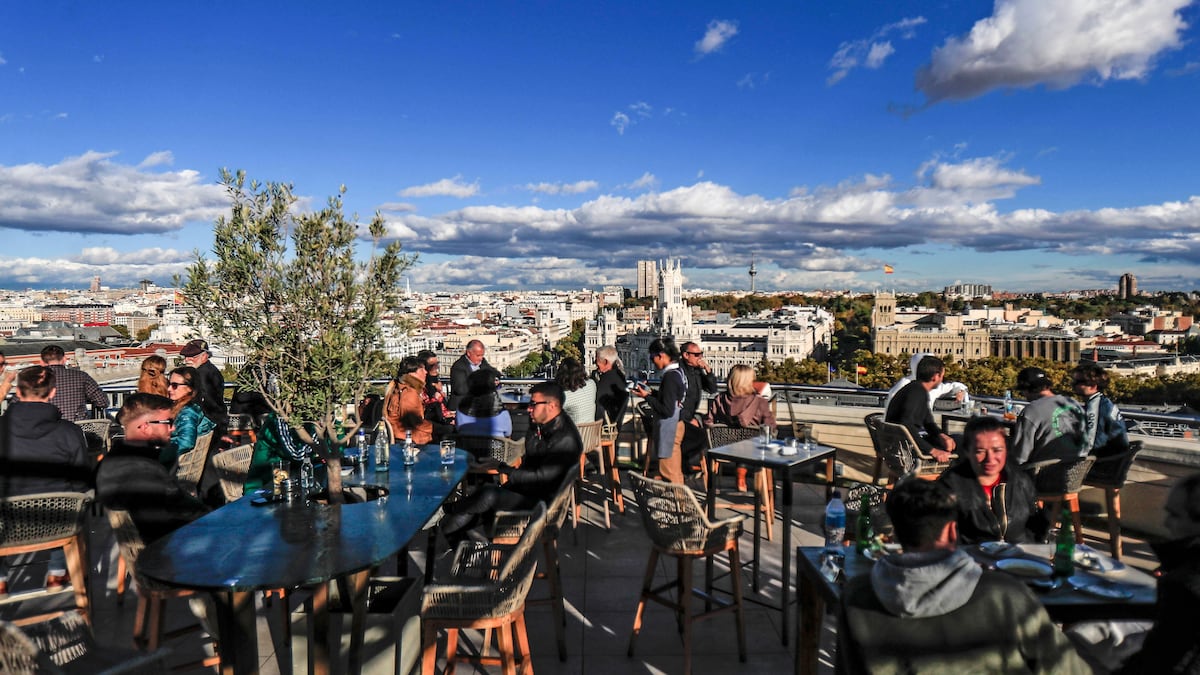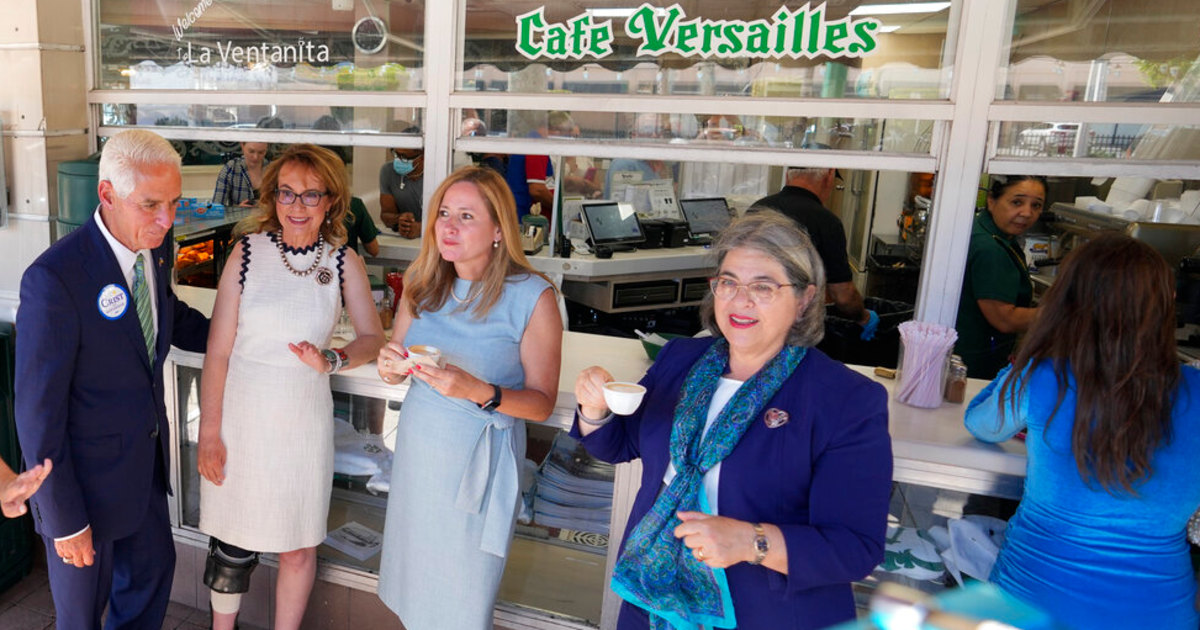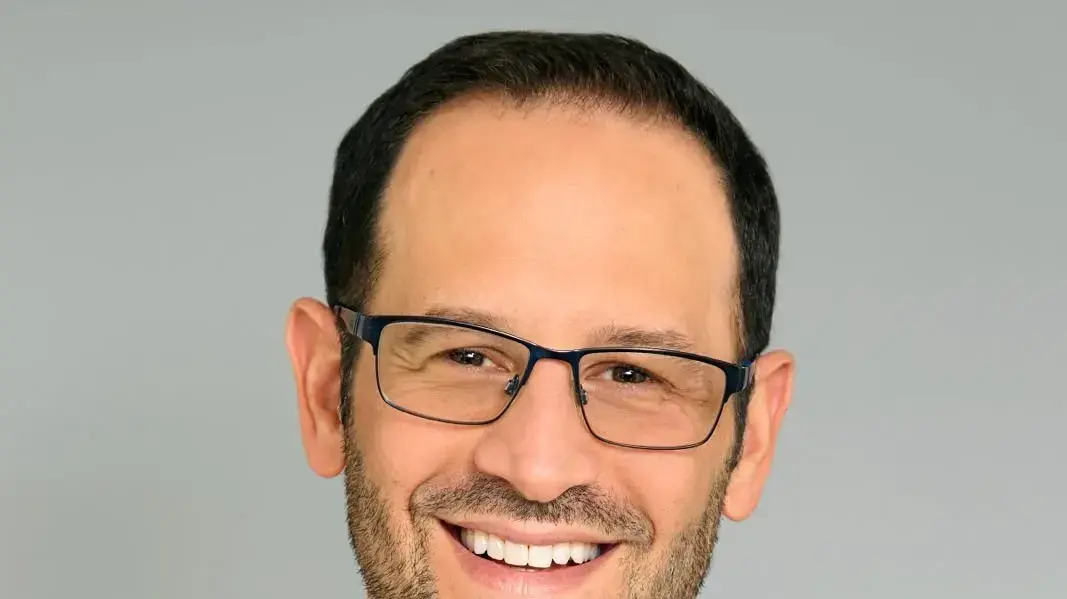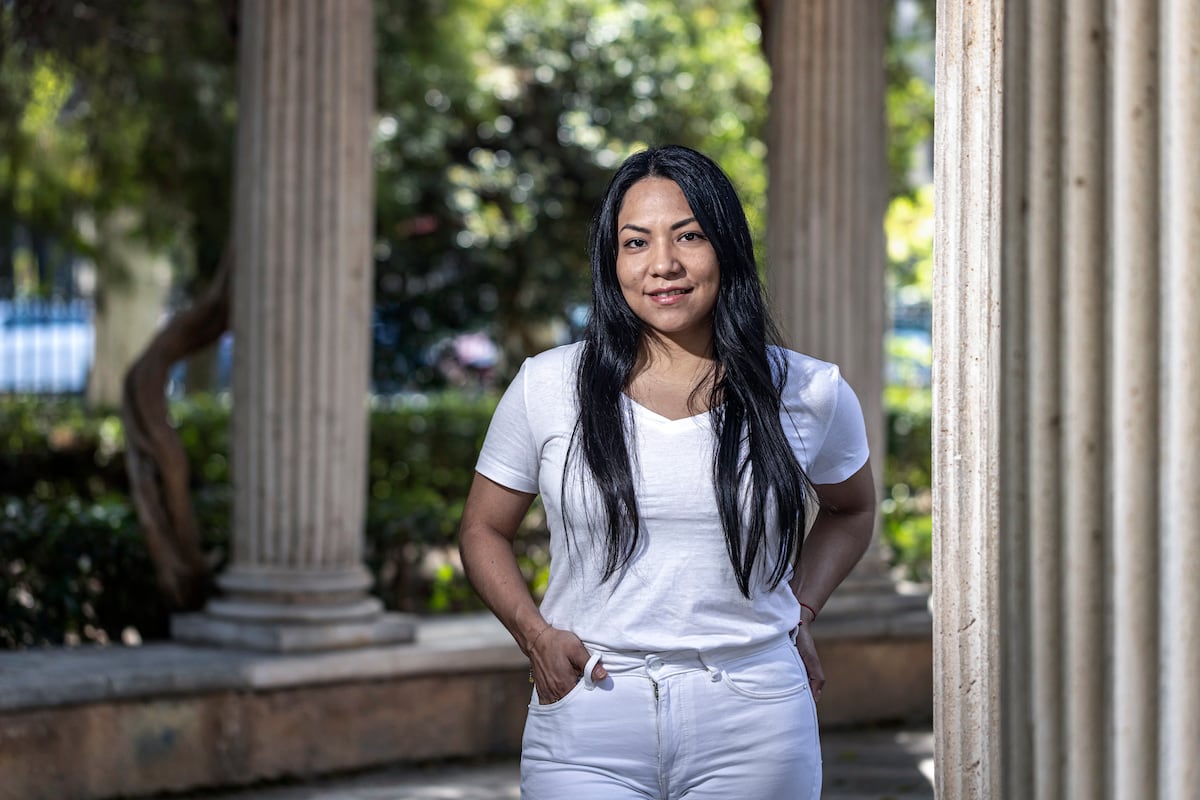More and more Spanish accents are heard in Madrid, which has become the European Miami in a very short time.
The Spanish capital rivals the city in South Florida, a traditional destination for Latin American millionaires to expand their companies and give refuge to their capital.
“Madrid is in fashion in Latin America.
Since the pandemic, it is well known for having maintained its activity, for its good infrastructure, transport and security.
And because the regional government removes obstacles to companies that settle here ”, the vice president of the Community of Madrid, Enrique Ossorio, puffs up his chest.
Latin American investment in the region since 2008 amounts to 12,044 million euros, according to the Ministry of Economy.
In recent years, wealthy Venezuelan, Mexican, Colombian and Peruvian businessmen have arrived in the capital, whose rate of exodus is always marked by political turmoil in their countries of origin.
Madrid fits them like a glove.
They eat in the fashionable restaurants on Jorge Juan street, buy clothes and jewelry in the luxury stores of Serrano, buy rehabilitated homes at an average of 12,000 euros per square meter and pay for the best business schools for their children.
Many of these rich have established their residence in the city, being the Salamanca neighborhood —the most expensive in Madrid—, their reference.
More than 2,000 Venezuelans and more than 1,100 Colombians reside there, especially in the Goya area.
The regeneration of this nucleus and its buildings has been overwhelming, but at the same time it has caused a marked process of gentrification and more expensive houses.
"The price in the Salamanca neighborhood has increased 100% since 2013, going from 6,000 to 12,000 euros per square meter," says Luis Valdés, director of Residential at Colliers International.
Mar Espinar, spokesperson for the socialist group in the Madrid City Council, believes that "attracting foreign investment is fine, the problem is governing thinking about that private investment and turning Madrid into an amusement park, forgetting about the rest of the neighborhoods."
first landing
At the beginning of the 2000s, the first Venezuelan fortunes landed (some from Chavismo).
It is no coincidence that the Salamanca neighborhood has been baptized as Little Caracas (little Caracas), according to Alberto Pérez Levy, president of the Venezuelan Civil Association in Spain.
This generated a strong pull effect that, in the last three years, has attracted Mexicans, Colombians and Peruvians with high purchasing power.
Some examples are the former Mexican president Peña Nieto or the Venezuelans Capriles (Gran Roque Capital) and Alejandro Betancourt (Hawkers).
Also the Peruvian Paul Mulder, CEO of Emefin (Kiwoko and Tiendanimal), or the Brazilian Frédéric Lévy (Havaianas).
That the great fortunes establish their residence in Madrid is nothing more than the consequence of the growing Latin American investment that has arrived in Spain in recent years.
Before, in the eyes of Hispanic capital, only Miami and New York existed.
Companies had missed an elephant ahead and had not seen it.
Today, there is no company,
family office, start-up
or traditional investor that has not already landed in the capital or is considering doing so.
Spain —Madrid concentrates around 70% of all foreign investment that arrives in the country— is the gateway to Europe for these companies.
It is the second Latin American investment destination in the world, only behind the US. In the last decade, the country has accumulated direct investments of 32,915 million euros, with a growth of 99% from 2010 to 2020, calculates Adrián Blanco Estévez, Head of the Latam Desk department at ICEX-Invest in Spain.
The accumulated investment since 1993, when the series began, is 65,618 million.
"It is a fundamental destination in the internationalization of these companies and, in fact, Latin America is already the fourth largest investor in Spain," says Carlos Morales, president of Madrid Platform, which was born in 2020 with the aim of turning Madrid into the
hub
business between Europe and Latin America.
In the first half of 2022 alone, Hispanic-American investment in Spain was 626 million euros, 179% more than in the same period of the previous year, calculates Blanco Estévez.
The volume is surely higher because there are a large number of investments carried out by Latin American family offices, especially in the real estate sector, where there is greater opacity and they remain below the statistical radar.
In addition, the ICEX records, through private data, 23 South American investment projects until September.
"The historical record of 24 projects is going to be broken," says Blanco.
Mexico is by far the largest investing country, especially in brick.
"The country's investment stock in Spain reached 38,000 million dollars, being its main Latin American partner, with 500 companies and more than 50,000 jobs generated," according to data from the Embassy of Mexico in Spain.
The reasons why Madrid has become an unofficial capital of Latin America are diverse: personal and legal security, favorable taxation, and political and economic stability.
Also, quality of life, leisure, gastronomic and cultural offer, climate and direct flights from Madrid to Mexico City, Caracas or Lima, as well as to the US and the rest of Europe.
The ease of obtaining residency is added (in 2020, 32 Golden Visas were granted to Latino investors; in 2021 there were 41, according to the Foreign Ministry).
And, above all, more affordable prices than in Miami.
“Housing has multiplied by three or four in the last five years,” says Julio Veloso, a partner at Broseta Abogados, with a presence in several Latin countries.
“Miami is more expensive than Madrid from any point of view and, according to the latest report from the HSBC bank,
Added to this is the tongue.
"If two countries share a language, investment relationships can be multiplied by seven," according to Blanco.
And the historical and cultural ties.
"One in four people from Madrid has direct ties to Latin America," according to the Organization of Ibero-American States for Education, Science and Culture.
The Government of the Community of Madrid actively encourages the title of the Miami of Europe, especially with the banner of being "a free and open economy with the lowest tax burden in Spain".
However, the new solidarity tax that the Government is preparing for large fortunes will be a good thermometer to see if investment slows down.
“It is perceived as a very important barrier and some residents are thinking of leaving the country,” according to Joaquín Giráldez, from Broseta Abogados.
Morales disagrees: "Legal and personal security is much more valued."
Building rehabilitated by Mexican capital in Marqués de Salamanca, 11. Luis Sevillano
REAL-ESTATE MARKET
Owners and gentlemen of the Salamanca neighborhood
SANDRA LOPEZ LATVIAN
The rich Latinos have bought the Salamanca district.
And, despite the shortage of supply and the escalation in prices, the crush on Madrid looks set to continue.
The devaluation of the euro against the dollar makes the purchase even more attractive.
"Many clients are asking us to advance payments to ensure the exchange rate," says Gabriela Reyes, commercial director of the Mexican developer Be Grand in Spain.
"With the depreciation of the euro, Latino buyers and investors have 20% more purchasing power," emphasizes Alberto Díaz, general director of Capital Markets at Colliers.
It is impossible to quantify how much they have invested —confidentiality is key—, but the approximate number of projects is.
“They have developed more than 60 luxury apartment developments,
Venezuelan businessmen Axel Daniel and Miguel Ángel Capriles, with their investment vehicle Gran Roque, were pioneers in the construction of luxury apartments in the center of Madrid.
Around 2013, when no one wanted to hear about brick, they began to buy buildings at demolition prices that they later renovated and sold for twice as much.
They bought at an average price of 3,000 euros per square meter to rehabilitate and sculpted the neighborhood to their liking.
“At first it was very far from what they considered luxury.
A decade ago it was unthinkable to talk about new apartments of 400 or 600 meters in the center”, says Luis Valdés, director of Residencial de Colliers.
Miguel Ángel Fernández, sales director of Engel & Völkers in the Salamanca district, describes what happened as a "spectacular avalanche of Venezuelans, big capital and wealthy families who bought in the most prime area."
There was (and is) a thermometer: "The closer to the Plaza de la Independencia, the more expensive," he adds.
The Impar group, owned by Latin American capital and led in Spain by the Venezuelan Roberto Perri, who arrived in Madrid in 2013, has delivered the homes of its building at Núñez de Balboa, 86 this year. Here is the most expensive apartment sold by the group: 14,500 euros per square meter.
They have developed 23 projects within the M-30 and as Odd Capital, their venture capital manager, they have 288 homes (delivered and underway, including soon López de Hoyos, 171).
Now they are doing projects in Chamberí (Galileo, 9 and 91).
The Venezuelan businessman acknowledges that the lack of buildings to buy and renovate in the Salamanca neighborhood and their high sales prices are affecting the rate of release of new projects.
"In order to make an operation profitable, we could not buy more than 7.
Thus, “in the absence of product, investors and buyers are going to the upper part of Salamanca (past Príncipe de Vergara) and the Retiro neighborhood, in the streets bordering Menéndez Pelayo.
For example, in Chamberí —excluding Almagro—, prices are more affordable: the square meter costs between 7,000 and 9,000 euros”, says Elena Jori, director of Real Estate at Home Select.
In the last three years, Mexicans, Colombians and Peruvians have taken over.
Among the groups of Mexican capital is Terralpa, which has Marqués de Salamanca, 11, a stately building from 1932 and 16 floors.
The sale of the penthouse in April set a record: more than 27,800 euros per meter.
Barely a year ago, Be Grand arrived in Madrid, one of the main developers of luxury apartments in Mexico with more than 6,000 homes sold and an extensive customer base looking for an investment opportunity outside their country.
"We offered them Madrid, where they have family ties, friends and businesses, so it was very well received," says Reyes.
The promoter develops five projects in Spain.
One of them consists of 25 homes in a building at Calle de Padilla, 66, in the Salamanca neighborhood.
“In two days the first batch was sold, we received 70 deposits of 2,500 euros for 16 floors.
We have recently launched the second lot with nine homes on the market”, says Reyes.
The promoter's plan is to invest between 150 and 200 million euros (representing purchases of between 300 and 400 million) in
prime areas
de Madrid (also in Malaga) in the next five years, says Ginés Navarro, general director of the manager Admara Capital, operating partner Be Grand in Spain.
The square meter sells for 10,000 euros on average.
Luxury prices in Madrid are much more competitive than those in Miami, where an equivalent apartment can reach 20,000 or 22,000 euros per meter.
Without counting "the very high community expenses and the annual payment of the property tax (our IBI), which represents between 1.5% and 2% of the value of the property," says Jori.
Latin Americans look for restored classic buildings from the 19th and 20th centuries, with stairs and protected facades, balconies and large portals.
The en-suite bathroom and the integrated American-style kitchen are essential.
"The houses in demand usually have a minimum of three rooms and, if possible, with a terrace and views," says Rafael Alamillo, CEO of Home Boutique.
For them, there is no luxury without
amenities,
like in Miami condominiums: heated pool, spa, gym, Turkish bath, massage and beauty room.
Torre Caleido, headquarters of IE University.
alvaro garcia
EDUCATION
Training for the elites
CARMEN SANCHEZ SILVA
With the conviction that Madrid has become the new Miami for Latinos, the vice president of the Community of Madrid and Minister of Education, Enrique Ossorio, indicates that the regional government has now set education as its objective: "We want Madrid to be the best place in the world for Hispanic students”, he maintains.
“Our universities have a lot of appeal for them.
First because of the language and then because the titles have a lot of prestige in their countries of origin”, he assures.
"Of the 32,000 foreign students we have, some 11,000 are from Latin America," says the vice president.
The community works with the embassies to attract these students and encourages the region's universities to participate in international fairs.
"We want these figures to grow," adds Ossorio.
It is one of the strategies to stop the demographic decline experienced by Madrid classrooms.
Traditionally, Spanish universities have been a preferred destination for Hispanic-American students.
But in recent years its growth has skyrocketed: they have gone from 40,285 enrolled in the 2015-2016 academic year to 66,009 in the 2020-2021 academic year, 64% more in just five years, according to the latest data from the Ministry of Universities.
A boost to which the private centers have contributed especially, which have multiplied the number of students by almost three.
Colombians, Ecuadorians, Peruvians, Chileans, Venezuelans and Argentines are increasingly choosing to study in Madrid.
And a displacement of its demand is appreciated.
If until recently they came mainly to take master's and postgraduate degrees, today it is undergraduate studies that are increasing the most.
Latin American graduates have increased by 82.5% in the last five years and almost a quarter of them have graduated from Madrid centers.
Especially at the European University, the Complutense and IE.
According to the president of IE University, Santiago Íñiguez de Onzoño, Latin American students represent 25% of the total at his institution, where they take care of the percentages of nationalities to contribute to diversity.
“Since the Entrepreneurs Law and another series of regulations that favor the migration of citizens with a residence permit or nationality have been promulgated, Spain has become the favorite destination for Latin American investors and entrepreneurs.
In 2021 alone, there were more than 18,000 applications for nationality by Mexican citizens.
The wave of populism in their countries has been one of the fundamental reasons for the change”, he explains.
And with them their children have arrived, who are studying at centers like IE.
USA displaced
Íñiguez also says that Spain has become the first destination for students in Latin America, ahead of the United States, especially for Mexicans, Chileans and Colombians.
"There is a shift from the Donald Trump government, when the United States became an unfriendly destination for them."
The institution notes a significant increase in applications from Hispanic students.
Especially in the degrees because the general demand for master's degrees has slowed down this year.
"The Madrid campus is a focus of attraction for Hispanic Americans, well above our other campuses," confirms Felipe Llano, general director of ESIC Business & Marketing School.
The exchange of the euro against the dollar has increased the advantages of the city.
Same as the lower cost of living compared to Miami.
Enrollees from Latin America have grown by 23% this year at the Madrid school.
“The galloping inflation in the region, the political uncertainty and the great flight of capital that is taking place favor us”, analyzes the manager.
Its 500 Hispanic students fall into two categories, explains Llano, young people from upper-middle income who want to carve out a solid international professional profile and professionals who take a break in their career to retrain.
Education is the new diplomacy, says Nuria Vilanova, president of CEAPI (Alliance for Ibero-America Business Council) and of Atrevia.
“In Spain we train Latin American business elites in private business schools.
Many of these leaders will stay.
We will keep the best talent.
And those who return to their countries will take the imprint of ours, ”she appreciates.
“In addition, the cultural elites of the region are being trained in public universities through scholarships.
All these centers are going to leave a brutal mark on the Latin American elites, ”she adds.
Private banking office of A&G, in Madrid.JUAN BARBOSA
PRIVATE BANKING
Red carpet in the world of money
DAVID FERNANDEZ
Privacy and exclusivity are two non-negotiable requirements for private banking customers.
Stately buildings in the Salamanca district or on Paseo de la Castellana in Madrid house the offices of most of the entities that manage the wealth of the great fortunes.
Just a discreet sign on the portal informs of its presence.
For a few years it has been common to hear accents from the other side of the Atlantic in these temples of money.
“The arrival of Latin American high net worth began in 2012. With the euro crisis, many
family offices
of these countries began to analyze investment opportunities in Spain”, explains the head of private banking for a US entity.
“This trend has accelerated in the last four years.
Political changes in the region, with the accession to power of populist governments, have made many families consider a change of residence seeking greater legal security for their assets.
And Madrid is a very attractive destination for them because it is the gateway to Europe, because of its quality of life and because of the cultural ties that unite us”, adds this banker.
When a Mexican, Venezuelan, Colombian or Brazilian millionaire decides to emigrate from their country of origin, the most common thing is to seek the support of a global entity that provides services in the different countries in which they reside.
However, if what they are looking for are experts who know the legal and tax specifics of the country where they land, the option of hiring a local private bank wins integers.
"Obviously, this type of client has become a clear objective for us," acknowledges Juan Carlos Solano, director of
key clients .
in Andbank.
“There are many reasons why they may require our services, but if their initial contact has to do with obtaining a residence permit — one of the three requirements must be met: real estate investment of more than 500,000 euros, purchase of public debt Spanish for more than two million or acquisition of shares of Spanish companies for more than one million—, that already conditions the preparation of its initial portfolio of assets”, adds Solano.
The growing ties between the world of Latin American money and Europe mean that some entities group both regions under the same business unit.
One of them is the Swiss Lombard Odier.
Its manager for southern Europe and Latin America, Stephen Kamp, believes that these high net worth individuals have common and differential features with respect to those from other latitudes.
“While European clients have a greater tendency to invest in listed companies or alternative assets, Latin Americans are more used to having exposure to fixed income because they come from countries that have historically had very high interest rates.
Another difference has to do with the way in which they manage their portfolios: high net worth individuals delegate more to the discretionary management of their money by private bank managers,
What begins as a purely financial relationship between Latin American high net worth and their private banking entity usually leads to an expansion of the perimeter of services they demand.
“We like to have a partnership relationship with our customers.
At first they see us as a financial and tax advisor, but little by little they start to ask us for real estate or even investment banking services because they want our advice when evaluating the acquisition of potential companies”, admits Diego Elejabeitia, A&G Business Development Director.
The experts consulted believe that the arrival of rich Latin Americans can be stopped due to the tax on fortunes —called solidarity— that the Government processes to finance the greater expenses derived from the war in Ukraine.
“Obviously, the rate can be a barrier.
These families seek reasonable taxation and greater legal security than they had in their countries of origin”, warns Elejabeitia.
This opinion is shared by his colleague who works for a large American firm: "We were working with several Latin American clients who wanted to establish their residence in Spain and who, when this new tax became known, chose Italy as their new destination."
Terrace of a restaurant in Jorge Juan street.
alvaro garcia
HOSTELRY
Luxury restaurants to see and be seen
MARIA FERNANDEZ
At the turn of the year, a 1,000-meter restaurant spread over four floors of the iconic Saldaña palace in Madrid, an asset of cultural interest, will open in the heart of the Salamanca neighborhood Abya.
Its owner, Manuel González, a Mexican businessman in the agricultural sector, says he has spent 50 million euros on the purchase and restoration over the last three years.
And what he is looking for with the sumptuous investment studded with works of art is to seduce his compatriots: he has recruited a chef who has given up his Michelin star to work on the project, and the top floor of the building will be reserved for private meals.
It is one more example of the gastronomic power of the capital, where the openings of luxury restaurants seem to have no end.
The businessman Jorge Ramses Llovet occupies more than a third of the Plaza de la Independencia, at the foot of the Puerta de Alcalá, with his restaurants and his tablao (Ramses, Patio de los Leones, The Kave, Lady Bongo) frequented by visitors from other side of the Atlantic.
"Madrid is the new capital of Latin America, it has become a place where a rediscovery of the mother country takes place."
He believes that many fortunes find the dream life in the city of enjoying the streets day and night without worrying about security.
"A tycoon has even told me that it is the only place in the world where he takes the subway."
He at the same time talks about a feedback from the local economy.
“They have been the great promoters of quality leisure.
And the witness is transmitted from parents to children who are looking for fashionable places.
Something that does not go unnoticed by companies.
"You don't see a national on a Wednesday spending 100 euros on dinner," admits the spokeswoman for another restaurant group.
Jorge Juan street is kilometer zero of this exclusive offer.
In 2.3 kilometers, hotel empires are concentrated, such as that of the Umbrella group, (Amazónico, Ten con Ten, among others);
La Máquina or Cañadío (La Bien Aparecida, La Maruca).
Paco Quirós, chef and co-founder of the latter, counts Venezuelans, Mexicans, Ecuadorians, Colombians or Chileans among his best clients.
“It is usually a public that does not look at prices.
If a bottle has to be opened, they open it and, if they like something, they repeat”.
The same thinks Ignacio de la Torriente, director of Mabel Hospitality (Tatel and Totó).
“They look for the essence of the best recipes of Spanish cuisine”.
At their tables sit Mexicans, Brazilians or Venezuelans who travel to the capital thinking of eating well in a pleasant environment and without problems to pay 60, 70 or 80 euros (or more) per person.
"For USA Today we are one of the 25 restaurants in the world that are worth traveling to, and that makes anyone who has tried our restaurant in Beverly Hills or Ibiza become interested in the one in Madrid, and vice versa".
In his case, the path is round trip: at the beginning of the year they will open in Mexico City.
In the Spanish capital, for now, De la Torriente does not see any problems with the competition.
“There is room for everyone.
We have been breaking billing records for 10 years”.
But not everything is so bright.
Coverage prices have skyrocketed, portions dwindle to ridiculous sizes, wine lists fill up with bottles that exceed 50 euros, and more and more restaurants are demanding advance payment when making a reservation.
Mar Espinar, spokesman for the socialist group in the City Council, criticizes the increased efforts in the most exclusive neighborhoods, such as the recent reinforcement of cleaning in Chamberí or Salamanca, to the detriment of the poor.
“The one with the terraces is a great example of how José Luis Martínez-Almeida is focused on private interests, forgetting that the terraces are occupying most of the public space.
Areas like Ponzano, Ibiza…, we are kicking people out of their homes because they can't sleep”.
José Antonio Aparicio from the Madrid Hospitality Association also speaks of the most suffered face: "The sector is alive, but there is a tsunami of costs, with skyrocketing raw materials, rents... 92% of the 35,000 premises in the city have between one and five workers, there are many SMEs at risk that are being put under a lot of pressure”.
He appreciates that there is a lot of foreign investment, "but it also happens that costs are eating up profitability", and rents, after two frozen years, are going up again.
Pablo Trapote, belonging to one of the best-known families in Madrid entertainment (Joy Eslava, Chocolatería San Ginés), is in charge of the Teatro Barceló and is one of the latest businessmen to announce a grand opening: Hensi, a restaurant in Alberto Alcocer.
He is not afraid of supply saturation.
“Madrid is the European capital of leisure, it tends to grow, you see all the areas full.
Profitability is not easy in the short term, but it is if you look for it in the medium term”.
Full venues seem to cover any storm cloud.
The gastronomic festival continues.
Subscribe to continue reading
Read without limits
Keep reading
I'm already a subscriber



/cloudfront-eu-central-1.images.arcpublishing.com/prisa/OMA4UFCHWBCAJBF6ZSPZWE4ARQ.jpg)
/cloudfront-eu-central-1.images.arcpublishing.com/prisa/HXTIXWY4CZBOVEEG4LB5KEE354.jpg)










